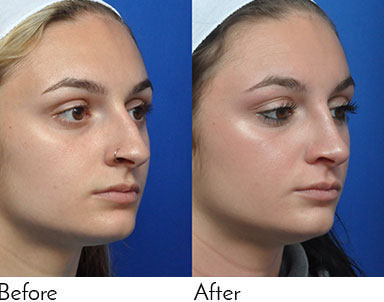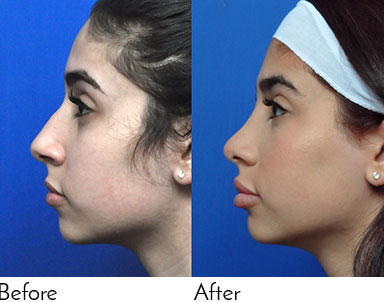Just Had Your Facial Implant Surgery?
This page contains all of your post-surgery instructions. Conveniently located in Jacksonville, Garcia Facial Plastic Surgery, led by double board-certified facial plastic and reconstructive surgeon Dr. Phillip Garcia, offers facial implants for men and women residing in Ponte Vedra Beach, Orange Park, Lakeside and nearby areas in North Florida.
Thinking about facial implants?
Click here for pre appointment guidance.
Scheduled a facial implant consultation?
Click here for pre surgery instructions.
Scheduled a facial implant surgery?
Click here for post procedure instructions.
Recovery is perhaps the most important step of the facial implant process. After having your facial implant surgery, you need to take great care in the following weeks to be gentle on your body and let it heal as needed. Most of this involves resting and following the post-operative guidelines provided by Dr. Garcia. Keep reading to learn everything you need to know about the facial implant recovery process.
Essential Surgical Documents For You To Review
Please download these essential pre surgical documents and lists of supplies
FACIAL IMPLANT POST OPERATIVE INSTRUCTIONS
What is Recovery from Facial Implant Surgery Like?
After undergoing facial implant surgery, patients can expect to experience some swelling and bruising, which is completely normal. Due to the swelling, facial movements like smiling and talking may feel uncomfortable for a few days. Patients may also have to follow some dietary restrictions due to the incisions made inside the mouth. Dr. Garcia can prescribe pain medication to help with any discomfort during the initial recovery period. It’s recommended to take at least a week off from work after the surgery. Gradual resumption of daily activities is allowed, but strenuous activities that may put the face at risk of injury should be avoided for approximately six weeks.
To ensure proper healing and reduce the risk of complications, patients should follow the post-operative care instructions provided by their surgeon, attend all scheduled follow-up appointments, and take prescribed medications. Recovery time can vary, but it typically takes several weeks to fully recover. The initial swelling and bruising will likely subside within the first two weeks, but some mild swelling may persist for up to several months. The duration of recovery depends on the individual’s healing process and how well they follow post-operative care instructions.
How Soon After My Facial Implant Surgery Will My Before and After Photo Be Taken?
We will take your facial implant before and after pictures three months after the facial implant surgery. The facial implant photo is an important part of your follow-up visit to Garcia Facial Plastic Surgery. At that time, the facial implant before and after photographs will be analyzed by Dr. Garcia and the patient.
A Post Surgery Message From Dr Garcia
Dr. Garcia reminds patients that the recovery process is the most important phase in the facial augmentation journey. At this point, the final results are entirely dependent on the patient. We’re here to help you through the recovery process in any way we can, so don’t hesitate to reach out if you have any questions along the way.
Educational Videos
Frequently Asked Facial Implant Post-Surgical Questions
How long does it take to recover from facial implants?
The recovery timeline after a facial augmentation procedure can vary depending on several factors, including the patient’s overall health and the extent of the procedure. Generally, however, patients can expect to make a full recovery in 4 to 6 weeks. Here is a typical timeline for facial implant recovery:
- Days 1-2:
- The first two days after the procedure, patients may experience swelling, bruising, and discomfort, which can be managed with pain medication and cold compresses.
- Days 3-7:
- By the third to seventh day, swelling and bruising should start to subside, and patients should start to feel more comfortable.
- Week 2:
- By the second week, most patients can return to work and other light activities, although they may still experience some swelling and tenderness in the treatment area.
- Weeks 2-4:
- Over the course of the second to fourth week, swelling and tenderness should continue to subside, and patients should start to see the full results of the procedure.
- Months 2-3:
- Patients should be fully back to normal by the end of the 2nd month after their facial augmentation surgery. Results may continue to finalize as residual swelling heals and the facial tissue continues adjusting to surgery, but most of the final results should be visible within 6 weeks of surgery.
- Days 1-2:
How long do facial implants last?
Facial implants are designed to be a long-lasting solution for facial augmentation. Both the Silastic and Mersilene® implants used at Garcia Facial Plastic Surgery are designed to last a lifetime. However, they can be easily removed if patients become dissatisfied with them at any point. Patients may choose to remove their facial implants if they are unhappy with the results, experience complications, or have a change in aesthetic preferences over time.
What activities should I avoid during facial implant recovery?
During facial implant recovery, it’s important to avoid strenuous physical activities that may put the face at risk of injury. This includes activities such as heavy lifting, vigorous exercise, and contact sports. It’s recommended to avoid these activities for approximately six weeks after surgery to ensure proper healing. Patients should also be careful not to bump or hit their face, as this can delay the healing process and potentially cause complications.
How should I sleep after facial implant surgery?
Sleeping position during facial implant recovery is an important consideration, as it can affect the healing process. Generally, it’s recommended to sleep on your back with your head elevated for the first few weeks after surgery to reduce swelling and promote healing. This ensures that you won’t put any pressure on the facial implants or the incisions as the body heals. It’s not recommended to sleep on your side or stomach during this time, as it can put pressure on the face and potentially cause complications. Be sure to discuss your sleeping position with Dr. Garcia to receive specific post-operative care instructions.
































